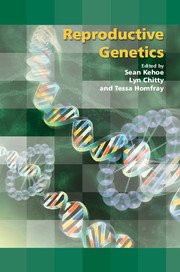
- Cited by 2
-
Cited byCrossref Citations
This Book has been cited by the following publications. This list is generated based on data provided by Crossref.
Whetstine, Leslie M. 2015. Ethical Challenges in Assisted Reproduction. Journal of Child Neurology, Vol. 30, Issue. 5, p. 547.
Tarnovska, A. V. and Heneha, A. B. 2022. Biometric analysis spermograms of men of different age groups in normal and pathology in Lviv region, Ukraine. Studia Biologica, Vol. 16, Issue. 3, p. 49.
- Publisher:
- Cambridge University Press
- Online publication date:
- February 2014
- Print publication year:
- 2009
- Online ISBN:
- 9781107784741




